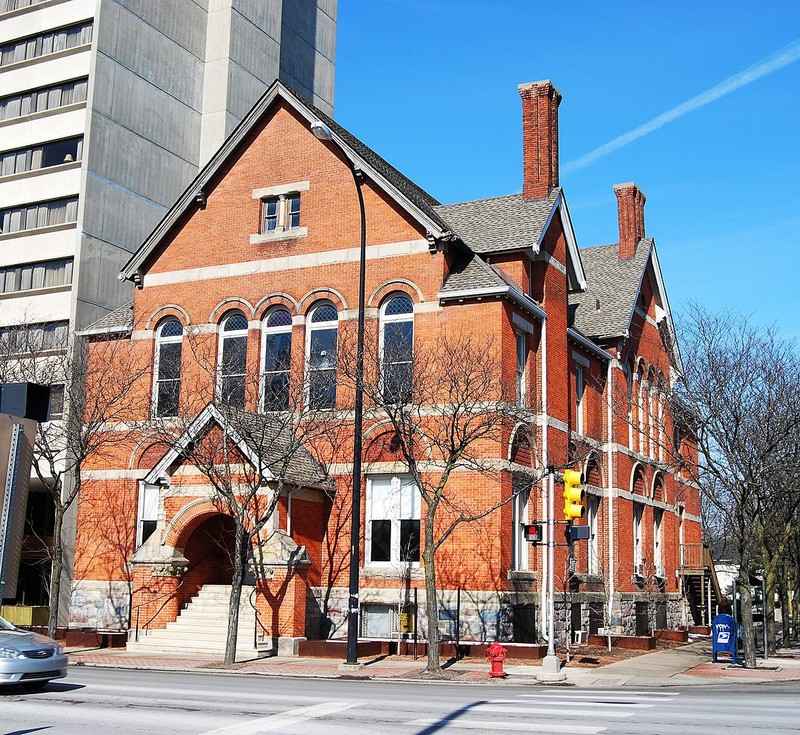Harris Hall
Introduction
Text-to-speech Audio
Images
2008 photo of Harris Hall in Ann Arbor, constructed from 1886-1887

Backstory and Context
Text-to-speech Audio
Built in 1886 for St. Andrew's Episcopal Church to serve as a parish house and student center for University of Michigan students, Harris Hall is significant for its connection between the Episcopal Church and the debate surrounding Darwin's theories of evolution.
The Reverend Samuel Smith Harris served as the second Bishop of the Episcopal Diocese of Michigan. During the late nineteenth century, Harris imagined constructing a forum to host intellectual discussions regarding religion and science, including evolution. He chose the University of Michigan in Ann Arbor as the location. Thus, in 1883, Harris worked with Ann Arbor's local parish, St. Andrews, and raised funds to build a building, which took place from 1886 to 1887.
The building initially went by the name Hobart Hall, named for former bishop John Henry Hobart. However, Reverend Harris unexpectedly died in 1888 only one year after seeing his building completed. Thus, the new hall took the name: Harris Hall. Harris Hall contained arguably the town's largest and best-equipped auditorium, as well as a gymnasium, bowling alley, and parish housing facilities for the Episcopal church. University students and the community also used the building for everything from lectures to concerts and social events. The USO moved into the building during World War II (1943) and remained there until 1946. For several decades after the war ended, the building served many purposes.
Harris Hall also enjoys architectural significance. Gordon W. Lloyd, an English-born architect who resided and worked in Detroit by the 1860s, made a name for himself designing several Gothic Revival churches throughout southern Michigan. Lloyd also designed numerous buildings for the University of Michigan. He designed Harris Hall noted for its picturesque massing and eclectic Queen Anne, Richardsonian Romanesque, and Gothic detailing and comprised of stone and terra cotta.
Sources
Christensen, Robert O. "Nomination Form: Harris Hall." National Register of Historic Places. archives.gov. April 22, 1982. https://catalog.archives.gov/id/25340694.
Reade, Marjorie and Susan Wineberg. "Harris Hall, 1886." Ann Arbor District Library. Accessed November 27, 2020.
By Dave Parker - Own work, CC BY 3.0, https://commons.wikimedia.org/w/index.php?curid=3611349
